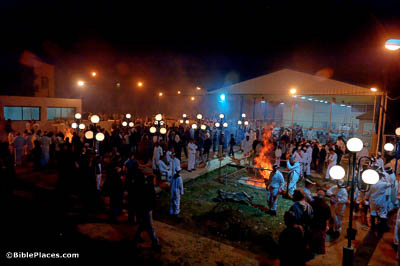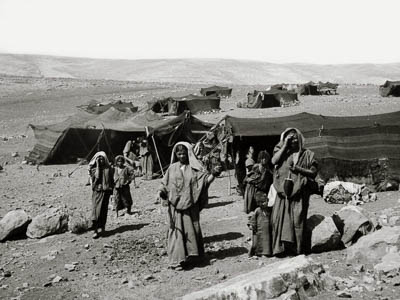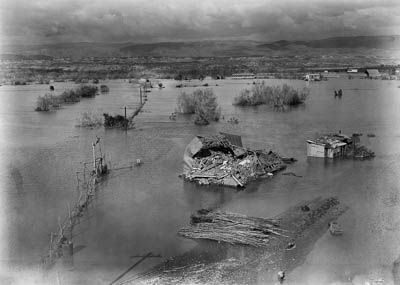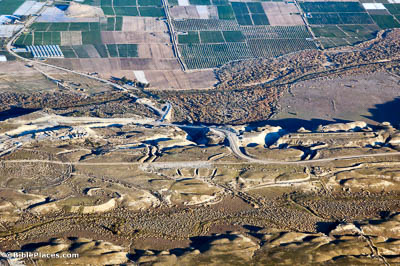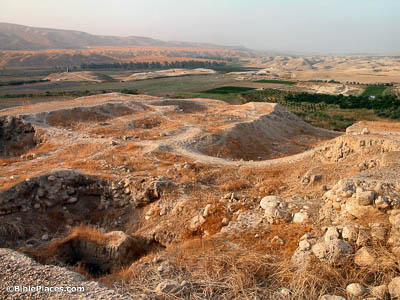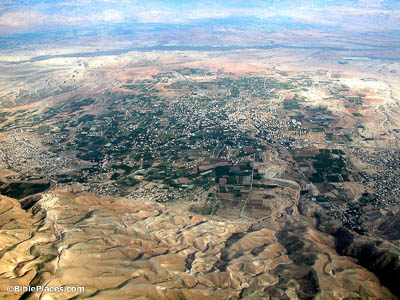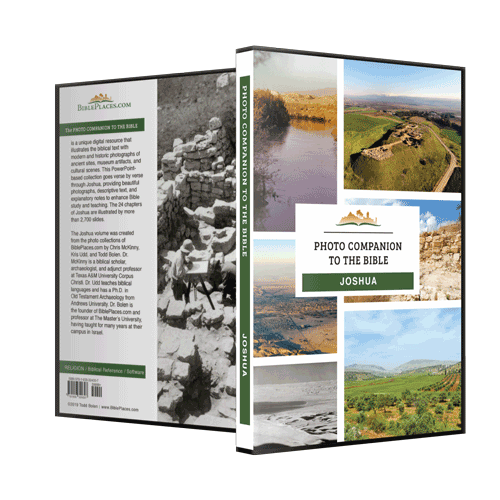Consecrate yourselves, for tomorrow Yahweh will do wonders among you (Joshua 3:5).
The word “consecrate” here means to set apart for some purpose; it is not associated in the Old Testament with any particular activity, but would entail a general avoidance of sin and concentration of the mind on what was to come. The scene in this picture is the night observance of the Passover by Samaritans, including sacrifices. Although the Israelites did not observe the Passover as part of the consecration described in this verse, there may have been Israelites who offered sacrifice at the tabernacle as part of their consecration to God at that time.
